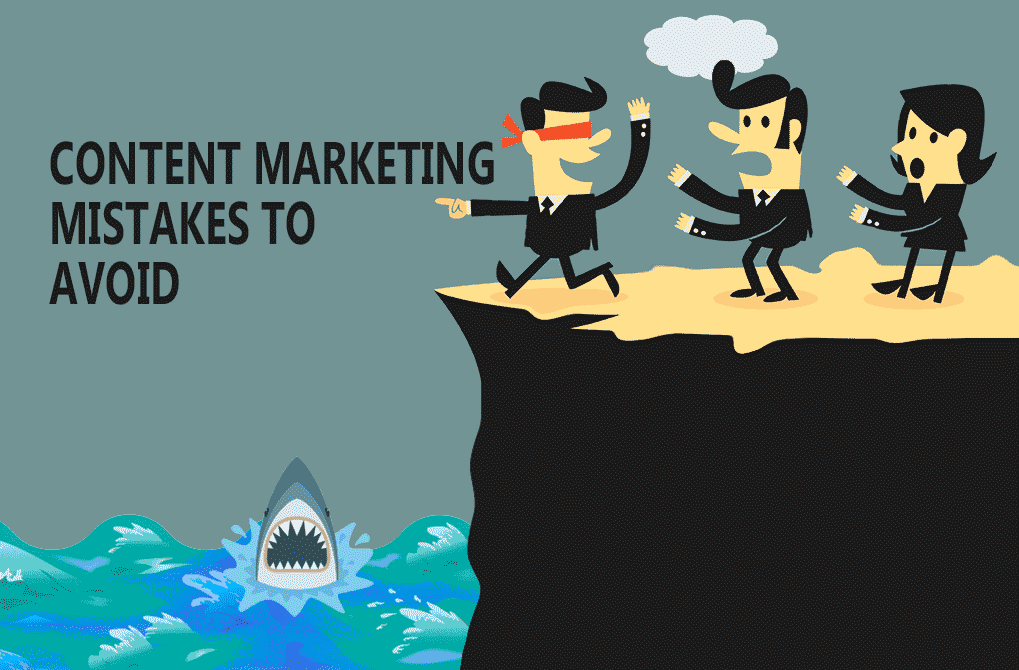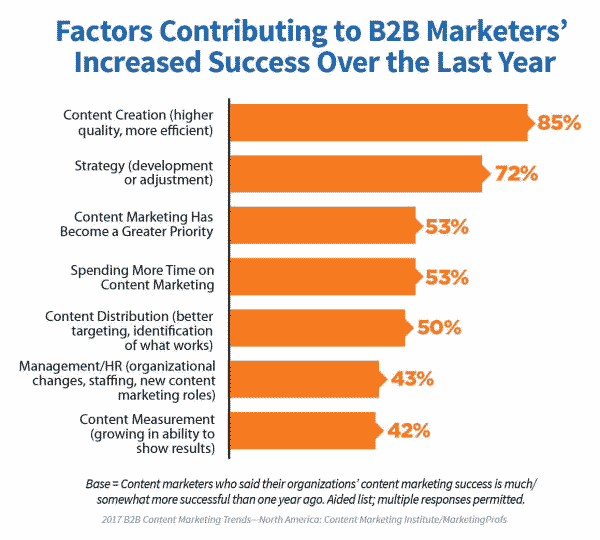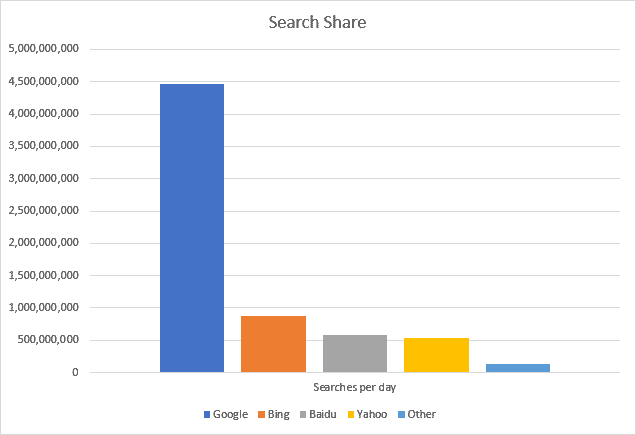Content marketing, fortunately, has gone mainstream. This means even very small and mid-size businesses are using content marketing instead of conventional in-your-face advertising. It also means there is a greater possibility of committing mistakes that can make content marketing counter-productive.
With every passing year marketers are getting more clarity on how to use content marketing for their businesses. This Content Marketing Institute graphic shows that more people are finding success with content marketing compared to previous years:
Marketers are also realizing that focusing on high-quality content to simply unavoidable:
Consequently, most of the content marketing mistakes are committed in the realms of creating or writing content.
Why is it important to avoid committing these grave content marketing mistakes?
The problem with content marketing is, especially when you’re doing it on your own, you don’t even realize that you are committing grave mistakes until it’s too late. Even when irreparable damage is being caused to business, instead of analyzing their mistakes, people end up blaming either their own business model or the entire content marketing process.
Listed below are 6 content marketing mistakes that you should avoid committing:
1. Opting for low-quality, cheap content
I provide content writing services to businesses and I get multiple queries every week for very cheap content. Many believe that if they fill up their website or blog with lots of cheaply-available content it will get them better search engine rankings. They believe that once the rankings improve people will come to their website and do business with them just because they can find their website.
They couldn’t be more wrong.
Cheap content achieves nothing. Even if somehow your link begins to appear on the first page of Google, very quickly due to its inferior quality, the link is removed from there. This is because Google these days allocates rankings based on user behavior.
Read Do You Know How Google Actually Ranks Your Content?
This means if people find your link and come to your website and then if they leave immediately because they don’t find what they’re looking for, you get negative ranking marks from the Google algorithm.
In fact, the loss is doubled by the fact that you have low conversion rate due to low-quality content.
So, what are you achieving by publishing low-quality, cheap content?
Possibly, better search engine rankings for a few days.
What are you losing by publishing low-quality, cheap content?
Lots of money. Lots of effort. Business growth that you could have experienced by publishing high-quality content. Search engine rankings. Conversion rate.
Basically, you achieve nothing.
2. Focusing on a narrow list of keywords
Although when you talk of keywords you immediately think of SEO, keywords also help you streamline your content marketing. They tell you what to talk about.
Focusing on a narrow list of keywords is a very self-constraining content marketing mistake. Fewer keywords means fewer topics for your content ideas. You will be constantly writing and creating new content around just a few keywords. This gives you inferior-quality content, and also attracts penalties from Google.
Instead, focus on a broader category of keywords. I don’t mean you dilute your keywords, but you should also focus on longtail keywords.
Remember that whether it is social media or search engines, people these days don’t use exact keywords. When they are trying to find you (your product or service) they use sentences and various combinations of your keywords and their lingual peculiarities.
3. Ignoring the conversion aspect of your content
By the end of the day, it’s all about your conversion rate. Whether you are writing content for your landing page, for your website or for your blog, its success is based on how people respond to it.
If the number of your subscribers doesn’t increase, if people don’t stay on your website or blog longer, if they don’t share your content on social media, if they don’t link to your content, if they don’t buy from you, your content is solving no purpose.
How does your content solve purpose?
For that you need to write content that is purposeful, useful, relevant, and actually provides information people are looking for, in a friendly language.
4. Not “marketing” your content
There is a reason it is called “content marketing”. Once you have published your content, you need to market it.
Marketing here doesn’t mean you use advertising to promote your content. It means making sure that maximum number of people can access it.
Marketing means spreading your content using your social media and social networking channels. It means encouraging others to spread around your links. It means building your own platforms like your mailing lists and social networks so that you can broadcast your content.
Marketing also means making sure that your content is search engine optimized. Despite Twitter, Facebook and Instagram, search engines still remain the biggest source of traffic for websites and blogs.
According to this Smart Insights post, there are more than 6.5 billion searches worldwide every day.
For individual search engines this is how the graph looks:
To make sure that your content reaches its target audience you will need to market your content using the following channels:
- Search engines
- Social media and social networking
- Mailing list (email newsletter)
- Back links from quality websites and blogs
5. Not repurposing your existing content
Content on the Internet exists in different formats because it needs to cater to different audience preferences. The Twitter audience may consume your content totally differently from your Facebook audience. The Instagram audience prefers images and videos. Facebook prefers images, videos as well as text. Facebook also prefers longer chunks of text. Twitter prefers shorter updates that are concise and to the point.
Not just social networking platforms, even on your own blog some people may prefer infographics, some may prefer slides and some may prefer PDFs.
Repurposing your existing content helps you create your existing content for different mediums in different formats. You can even create a complete blog post out of the subheading of an existing blog post. For example, How to repurpose old content.
Maybe a particular webpage contains lots of data that can be represented graphically. You can create multiple charts using the data.
Some of the blog posts for some of the concepts explained on your website can be visually explained by making a video and uploading it on YouTube.
Repurposing your existing content also gives you a chance to audit all review your content to improve it further.
6. Not publishing content frequently and not following a routine
Content marketing is not about publishing 5-10 blog posts and then thinking that your content marketing is done. It is an ongoing process. Why is it so?
Because millions of blog posts and websites are being published every minute on the Internet. 500 minutes of video is uploaded on YouTube every minute. 3.3 million Facebook posts appear on the Internet every minute. 448,800 updates are posted on Twitter every minute. 1440 WordPress blog posts are published every minute. – Source.
These are just a few publishing platforms on the Internet. There are thousands of more.
All this content is continuously published by various publishers and platforms and then indexed by search engines. This is one thing.
Another thing is, your competitors are constantly watching what you are publishing and how your content is performing on search engines and social media. They constantly try to outperform you.
Therefore, if you begin to rank well for a particular keyword, they immediately start publishing content to outperform you.
By the time you have published 5 blog posts, your competitors publish 10 blog posts, or 20 blog posts, or even 50 blog posts.
In terms of quantity there is no sense in competing. But you need to constantly update your website and blog to have something relevant for your audience and to give them a reason to visit your website or blog regularly.
To leverage content marketing, you need to publish regularly. You need to follow a routine.
Slow and steady wins the race. As mentioned above, if your competitor is publishing 50 blog posts in a week, there is no use competing if you cannot match in terms of effort, human resources and money.
The best bet for you would be to continuously publish unique content that originates only from your website or blog. This is the only way you can compete on an ongoing basis.
Conclusion
Listed above are a few content marketing mistakes that people often commit while implementing their content marketing strategy. Most of these mistakes originate from a lack of understanding of the state of affairs.
It’s a reality that people are using content marketing to dominate narrative – they have dominated narrative like this for centuries.
Content marketing is not some quick fix. It’s also not a one-time affair. Just like you need to continuously advertise, you continuously need to publish content.
Google, through its various algorithmic updates, ensures that only those websites and blogs rank higher that publish quality content.
Hence, if you want to carry on a successful content marketing, make sure you avoid committing the following content marketing mistakes:
- Opting for low-quality, cheap content
- Focusing on a narrow list of keywords
- Not paying much attention to your conversion rate
- Not marketing your content using available channels
- Not repurposing your existing content
- Not publishing content frequently and not following a routine










